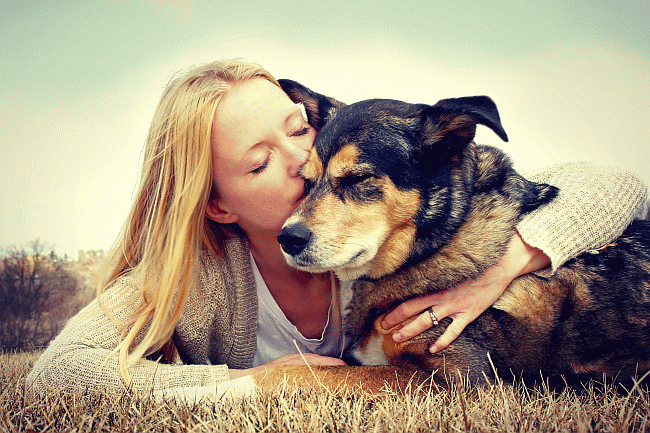
If you have ever been to a vet and seen an adult struggling to restrain a big dog, you know it is not a pleasant experience for either party. The dog is usually terrified and confused, and the handler is wasting time, energy and sweat simply trying to do his job. Unless the dog was a rescue pet adopted in adulthood, it is the dog owner’s fault for having failed to train and prepare him.
When dogs are puppies, they generally enjoy being handled, touched, cuddled and played with; but if they miss this important developmental stage, and grow up neglected or seldom touched, the result is often an unmanageable dog. Training a dog begins the moment you bring him home, and is particularly effective if he is young and malleable. Here are some guidelines about how to help train your puppy to be compliant and easy to handle whether at the groomers or veterinarians.
- Mouth: Occasionally put one or two fingers in your puppy’s mouth while he is on your lap. Move your fingers around his tongue and over his gums. Inspect his teeth and run your fingers over them.
- Paws, Legs & Rear: Hold a paw in one of your hands, and inspect each of the toes, touching each of the nails, and trimming them from time to time. The hold the dog’s collar as he stands up, and hold/observe his legs. Finally lift his tail and inspect his rear, so that this will not be alarming when done by a groomer or vet.
- Ears & Eyes: Connect with your dog by making eye contact with him, wiping his eyes with cleansing wipes, and inspecting/wiping the inside of his ears.
- Hugs & Contact: Petting and hugging your dog will be not only important for you to do, but also for every family member, and friends on occasion. Slowly increase the length of the hug, to train the dog not to be alarmed by prolonged contact.
- Restraints & Collars: Most dogs dislike being restrained, and may even get nippy if they are held by their collar. Have your dog sit by you, and pet him while you hold his collar. If he tries to get away, hold him steady and keep praise/petting him. When you are playing games, incorporate restraining him by the collar to signify when the game is done. Never pull his collar when he is in trouble, but only to train to keep him by your side. Follow this with rewards or praise; and he will respond positively to collar restraining.
- Strangers: Pass the puppy around. Let each family member do the handling with the puppy, and then intermittently allow friends and visitors to do so. This will familiarize your dog with being held/inspected by strangers, making trips to the vet that much easier.
If you puppy is squirmy at first, be patient and keep holding him. Part of the training is to show that wrestling will get him nowhere, and he should just relax. After a handling training session, always reward him with petting and a treat!

